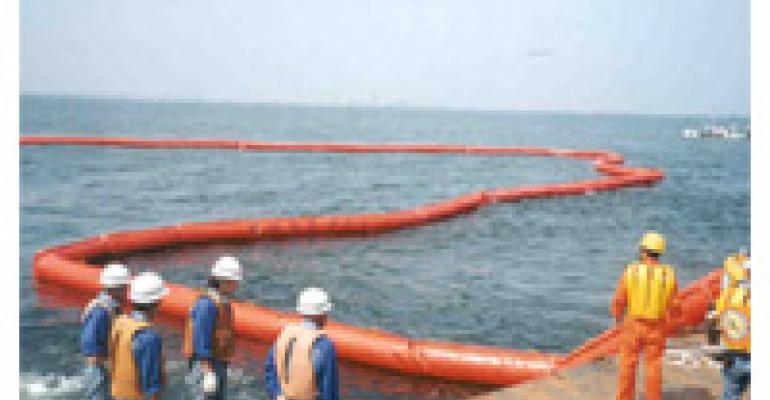
We don’t know if the environmental damage result resulting from the blowout on the BP Transocean Deepwater Horizon drilling rig off the coast of Louisiana will be as bad as experts predict. But even if it isn’t, the cost of, demand for and supply of key seafood species could change dramatically for full-service restaurant operators. Get ready.
Here’s the latest statement, as of this e-newsletter’s press time, from the National Oceanic and Atmospheric Administration, the arm of the U.S. Department of Commerce that has jurisdiction over the affected area:
“NOAA is restricting fishing for a minimum of ten days in federal waters most affected by the BP oil spill, largely between Louisiana state waters at the mouth of the Mississippi to waters off Florida’s Pensacola Bay.
“NOAA scientists are on the ground in the area of the oil spill taking water and seafood samples in an effort to ensure the safety of the seafood and fishing activities. There should be no health risk in seafood currently in the marketplace.”
It’s a strong, proactive move. But you may be wondering: When you call in your next order for oysters or shrimp, will your distributor have them, how much should you buy and will the price have gone through the roof?
Here’s what the Louisiana Seafood Promotion and Marketing Board wants you to know about the supply situation:
“The nation should remember that this closure only pertains to the impacted area of the Gulf of Mexico, not the entire Gulf. The Louisiana state waters west of the Mississippi River are still open and the seafood being harvested from those areas is safe. The state waters that remain open and unaffected by the spill account for 77 percent of the state’s total seafood production, which has an economic impact of $2.4 billion to our state.”
In a statement to its members the Louisiana Restaurant Association said not to panic. “Fishermen and suppliers are confident that there will not be an interruption in the state or nation’s ability to get quality Louisiana seafood.”
Translation: they’ve got enough to sell, so supplies should be adequate. For now. But what about seafood demand?
History tells us that when questions arise about a certain food’s safety, demand falls, even after the problem has been identified and health officials have isolated the cause. In this instance, because of the saturation coverage given to images of spewing undersea oil and vast oil slicks on the surface of the Gulf bearing down on the Louisiana coastline, we’re thinking that shrimp and especially oyster consumption is going to take a hit, even though the seafood reaching the market does not come from the affected area.
The biggest unknown is the cost of affected species like shrimp and oysters. Demand might soften due to health and safety concerns, but restaurant operators and others whose business depends on a steady supply might drive it temporarily higher as they stock up. “People are buying seafood and putting in their freezers,” Merlin Schaefer, a seafood retailer from Bucktown, LA, told the New Orleans Times-Picayune. “I’m doing it myself. Nobody knows what this thing is going to do.”
The bottom line is that there is plenty of uncertainty about how much damage the BP oil spill will do to the coastal ecosystem. All we know at the moment is that there’s a 10-day ban on fishing in the affected area, and that front edge of the oil slick has yet to reach the Gulf Coast. This uncertainty is likely to continue until BP figures out how to stop the flow of oil, an underwater engineering challenge that it almost beyond comprehension. The company, which carried no insurance on this production platform, is spending an estimated $6 million a day trying to solve the problem.
In the meantime, many fishermen fear they will lose their livelihood because there will no longer be any shrimp or oysters left to harvest. Here’s what Buras, LA, seafood dealer Rocky Dictharo told the Associated Press: “When you kill the food chain, nothing’s going to come back to this area.”
For now, full-service operators are riding the wave of uncertainty along with everyone else. But if you menu seafood that comes from the Gulf, you’d better prepare your servers to answer questions about exactly where it came from. Customers are going to want to know.
Want to learn more about why it's important to know your sources? Check out these articles:
Headed for the Beijing Olympics? Pack a Lunch.
When Green Was Not Necessarily Clean
Produce Safety: Lip Service or Reality?





